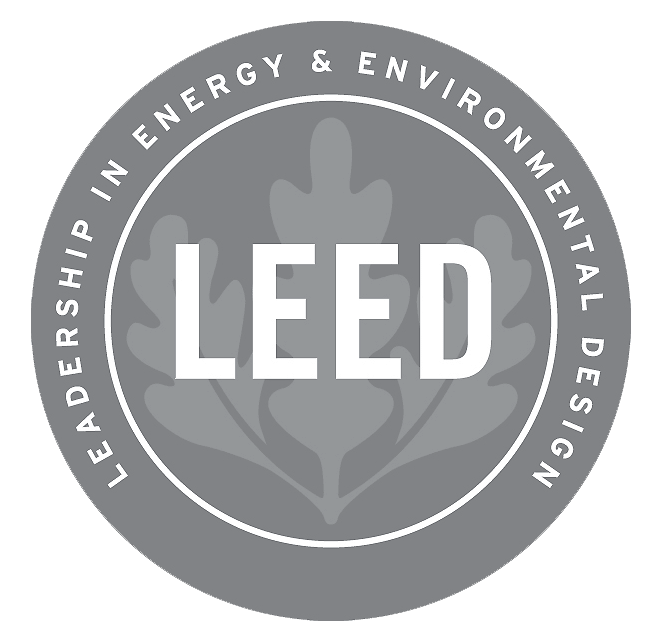In 2022, green building won’t be just for granola-munching hippies or off-grid survivalists―far from it. Today, the residential green building movement has gone mainstream. Everything from oceanfront new construction mansions in Malibu, California, to sleek new Manhattan condo buildings are going green.
While this new green trend is great for the polar bears, it can be a source of confusion and frustration for real estate agents who want to present themselves as hyperlocal experts. Sure, green technology might not have reached your farm area yet. However, rest assured that your next millennial buyer is going to ask about it.
To keep you in the know, we put together this cheat sheet of common green building trends and terms you’ll need to know for 2022 and beyond.
Green Building Trend: Living Roofs
Cece Doricko, Coldwell Banker Residential Brokerage, San Francisco

Example of a living roof in action: 2 Castenada Avenue in Forest Hill, San Francisco
Why Green Roofs Are Here to Stay
Green roofs, where seasonally adaptable plants are grown on the roof of a building, is a green building trend with a high return on investment (ROI). First and foremost, green roofs help regulate temperatures indoors by insulating the most vulnerable part of any home―the roof. They also offer neighbors a pleasant view and can serve a dual purpose as a place to grow vegetables or herbs in urban areas.
2 Castenada Avenue in San Francisco has an excellent example of an energy-saving and pretty-to-look-at green roof. Here’s the listing agent, Cece Doricko from Coldwell Banker, on how the green roof adds value to the listing:
“Originally built in 1926, this unique Pueblo-style home has been thoughtfully upgraded to incorporate today’s conveniences and systems while utilizing timeless finishes to create a modern classic. Views of the green roof can be seen from some of the windows on the upper level, and you can see the various plants on the roof from the outdoor patio. Plantings are drought-tolerant plants that include grasses, succulents, and colorful ground covers.”
Green Building Trend: Geothermal Heating and Cooling
Grace Bloodwell, Coldwell Banker Residential Brokerage in Boston

Why Geothermal Heating and Cooling Is Here to Stay
When it comes to green building technology for residential homes, it’s hard to beat the power of the Earth itself. First, the Earth is not likely to cool down for a few million years and, second, geothermal heating and cooling have been used successfully in the past.
For example, evaporative cooling has been used for thousands of years in the Middle East, and contemporary Earth Ships rely on ancient building techniques that take advantage of geothermal heating and cooling to keep homes comfortable year-round.
Believe it or not, geothermal heating and cooling are even making its way to the mean streets of Boston. Here’s Coldwell Banker agent Grace Bloodwell to explain:
“An extremely unique feature coming to the Boston rental market is geothermal heating and cooling. It will be part of The Ropewalk, a new development coming to historic Charlestown. The developers dug 500-feet-plus below ground level to access the subterranean temperatures that will heat and cool each of the 97 units. Tenants will save on energy costs and will benefit from an environmentally friendly system that heats and cools using the same mechanisms.”
Voice-activated Smart Home Technology
Ricardo Rodriguez, Coldwell Banker Residential Brokerage in Boston

Why Voice-activated Smart Home Technology Is Here to Stay
With smartphones replacing anything and everything they can replace, it’s only a matter of time before we’re all tweaking our thermostats and lighting from our phones.
Wait, did I say smartphones?
Let’s face it, even tapping a few times to open an app is too much work for some people. That means voice-activated technology will naturally eclipse any physical interface at all. Think of it as the clapper on (green) steroids.
Ricardo Rodriguez, a Coldwell Banker Residential agent in Boston, has been noticing voice-activated technology creep its way into our homes:
“In the past few years, we have seen app-based energy-efficient technologies becoming more part of the general specifications in new construction and have seen consumers understanding the value proposition of these technologies in terms of convenience and conservation of resources, both natural and financial.
“However, with the rapid adoption of voice-controlled devices, I think the most significant development around these energy-efficient technologies is the integration of voice activation into the systems. No longer do you even have to take out your phone to adjust your home settings, you can dictate what you want. Voice activation allows for a more intuitive integration and use.”
Hardware Covers to Make Steam Radiators More Efficient

Why Hardware Covers for Steam Radiators Are Here to Stay
Many people are surprised when I tell them that tens of thousands of the obscenely expensive apartments in Manhattan are still heated with antiquated radiator systems.
People are also surprised to learn that pushing around hot water to radiators in apartment buildings is relatively energy-efficient. The only problem is that steam radiators only have two settings; on or off. That leaves some apartments sweltering in the winter, which means tenants have to open their windows, which destroys the efficiency of the system and increases costs for landlords.
Radiator Labs came up with a clever, modern solution to this 100-year-old problem called The Cozy. Combining their app with a custom-built cover that regulates heat, they have been providing clients like Columbia University, LeFrak, and Municipal Housing Authorities, with an astounding 25% average savings.
Because they’re offering an affordable way to save energy and money, we predict that Cozys will be on every clanging radiator in the city in a few years. Did we mention you can also put your plants on them?
IAQ Devices

Why IAQ Devices Are Here to Stay
Bipolar indoor air quality (IAQ) devices, installed in home heating and air conditioning systems, not only provides a healthier indoor air environment by eliminating germs, dust particles, mold, odors, mildew, and bacteria that can cause illness, but are also eco-friendly since they reduce home emissions and improve the value of a house by reducing monthly energy electric/gas costs, in some cases, as much as 25 percent.
“The average home can be a breeding ground for mold, dust, odors, bacteria, and airborne viruses due to poor air filtration and ventilation systems. If someone in the family has allergies or asthma, poor indoor air quality can make them feel even worse,” says Tony Abate, a certified Indoor Environmentalist as designated by the Indoor Air Quality Association and the American Air Quality Council and vice president and chief technical officer at AtmosAir Solutions in Fairfield, Connecticut.
The cost of AtmosAir clean indoor air technology in a home, for example, can range from $1,490 to $1,895, depending on the size and number of rooms, according to Abate, but the cost is well worth the investment since selling a home with clean air technology is a huge benefit and money-saver for a prospective buyer.
Energy Modeling
Camilla Halstrom, Alpin Limited

Why Energy Modeling Is Here to Stay
Energy modeling, the process of using software to measure precisely how to improve a building’s energy consumption, has made leaps and bounds over the past few years. While it’s primarily still used in commercial applications, energy modeling has the potential to offer savings and green benefits for residential developers, renovators, and even homeowners.
Here’s Camilla Halstrom, from sustainable development specialists, Alpin Limited, to explain:
“One of the leading green technology trends in the next year will be energy modeling. This is not a new technology, but it’s improved immensely over the past few years. Today, there’s precise software that helps predict exactly how to optimize a building’s performance. This, again, impacts a building’s energy consumption because, already in the planning stage, smart decisions can be made in terms of lighting, airflow, and more. We’ve helped clients like New York University Abu Dhabi achieve energy savings thanks to this technology.”
LEED Certification
Jamie Safier, Douglas Elliman, Manhattan

Another trend spilling over from the commercial real estate industry, Leadership in Energy & Environmental Design (LEED) certification is a way for newly constructed and renovated buildings to show off their green credentials by passing a rigorous inspection and certification system.
Seeing the LEED-certified stamp on a listing can help sell multimillion-dollar condos in Manhattan. Here’s Douglas Elliman agent, Jamie Safier, on new developments that use LEED in Manhattan:
“The Visionaire in Battery Park City is just one of New York City’s buildings with this certification and the first with platinum level. LEED is internationally recognized and a green building certification system, that requires a third-party to verify that a building or community was designed with strategies to improve energy savings, water efficiency, CO2 emissions reduction, improved indoor environmental quality, and how they use other resources.”
Over to You
What green building technology and trends have you seen popping up in your market? Let us know in the comments.



 “Originally built in 1926, this unique Pueblo-style home has been thoughtfully upgraded to incorporate today’s conveniences and systems while utilizing timeless finishes to create a modern classic. Views of the green roof can be seen from some of the windows on the upper level, and you can see the various plants on the roof from the outdoor patio. Plantings are drought-tolerant plants that include grasses, succulents, and colorful ground covers.”
“Originally built in 1926, this unique Pueblo-style home has been thoughtfully upgraded to incorporate today’s conveniences and systems while utilizing timeless finishes to create a modern classic. Views of the green roof can be seen from some of the windows on the upper level, and you can see the various plants on the roof from the outdoor patio. Plantings are drought-tolerant plants that include grasses, succulents, and colorful ground covers.” “An extremely unique feature coming to the Boston rental market is geothermal heating and cooling. It will be part of The Ropewalk, a new development coming to historic Charlestown. The developers dug 500-feet-plus below ground level to access the subterranean temperatures that will heat and cool each of the 97 units. Tenants will save on energy costs and will benefit from an environmentally friendly system that heats and cools using the same mechanisms.”
“An extremely unique feature coming to the Boston rental market is geothermal heating and cooling. It will be part of The Ropewalk, a new development coming to historic Charlestown. The developers dug 500-feet-plus below ground level to access the subterranean temperatures that will heat and cool each of the 97 units. Tenants will save on energy costs and will benefit from an environmentally friendly system that heats and cools using the same mechanisms.” “In the past few years, we have seen app-based energy-efficient technologies becoming more part of the general specifications in new construction and have seen consumers understanding the value proposition of these technologies in terms of convenience and conservation of resources, both natural and financial.
“In the past few years, we have seen app-based energy-efficient technologies becoming more part of the general specifications in new construction and have seen consumers understanding the value proposition of these technologies in terms of convenience and conservation of resources, both natural and financial. “
“
Add comment